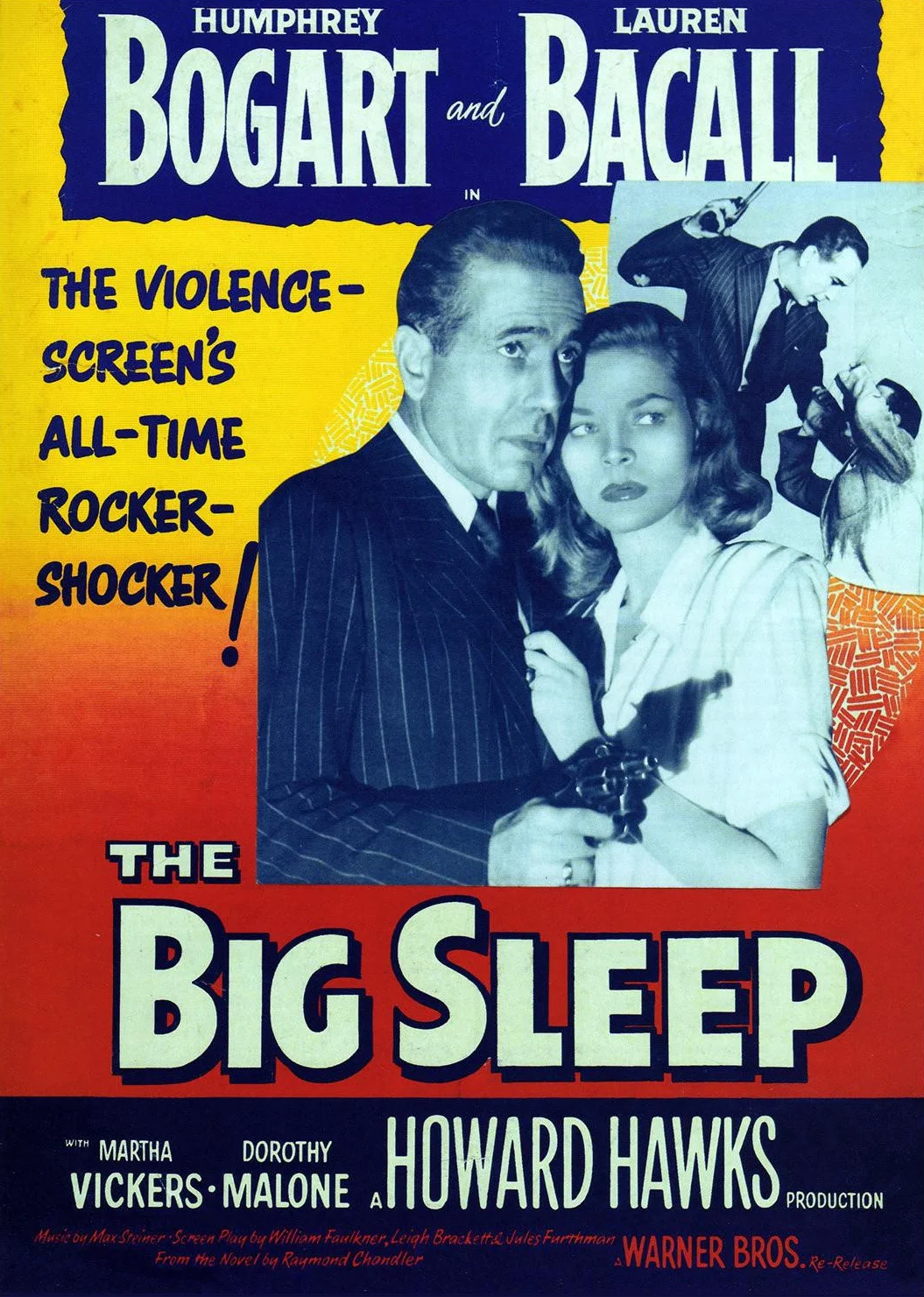On B List of Movie Reviews
(For optimum viewing, adjust the zoom level of your browser to 125%.)
The Big Sleep (1946)
Rate:
8
Viewed:
3/09, 9/20

3/09:
I read the book many years ago and wondered why Raymond Chandler called it The Big Sleep.
After seeing the movie, I think I get it now...in the literal sense. What hasn't changed at all is how convoluted and
incomprehensible the plot is. As a matter of fact, I was unable to follow the sequence of the events in the book despite my
best efforts.
The performances are fair, but the thespians have little to work with. Humphrey Bogart, who doesn't look physically good, may
have stepped into the shoes of Philip Marlowe quite nicely but fails to convey the same persona that made him an icon in
The Maltese Falcon. Lauren Bacall is ineffective and looks all wrong for the role. Let's face it: she's a one-hit
wonder who's dire need of acting lessons. Now, who's that girl in the bookshop?
All in all, every time I think of The Big Sleep, "confusing" is the first adjective that comes to my mind.
9/20:
It was 1939 when Philip Marlowe appeared in Raymond Chandler's debut novel The Big Sleep.
Seven years later, Humphrey Bogart had the privilege of playing the hard-boiled detective for the cinematic adaptation of
the book, and the result is film noir heaven. Still, my feelings are mixed: it's a good movie, but the plot is
extremely convoluted. Even the screenwriters and Raymond Chandler himself couldn't figure out who killed Owen Taylor. Almost
as annoying is Bogart touching his earlobe repeatedly.
There are many unanswered questions like "who did what?", "why?", and "what happened to the cryptic notes?" However, if
I choose to ignore them, the rest of the film is doable because of the atmosphere. Unfortunately, the writing isn't
as memorable as I hoped for compared to Farewell, My Lovely with Robert Mitchum who played Philip Marlowe to sheer
perfection.
Humphrey Bogart and Lauren Bacall were electrifying in To Have and Have Not, but in The Big Sleep,
their chemistry runs on a lower wattage. To Lauren Bacall's credit, her character does the most work, getting Marlowe's
attention while he's focused on the case at hand. No matter what, they're the main attraction of the show.
There are several pretty women who were subtly rejected by Marlowe the babe magnet. One of them is 19-year-old Dorothy Malone
at the bookshop. Next is Martha Vickers, as Carmen Sternwood, who had a bigger role which ended up on the cutting room floor
because she kept upstaging Lauren Bacall. She didn't have much of a career afterwards and died at 46 from a cancer of the
esophagus. As Eddie Mars' wife, Peggy Knudsen is another looker.
You'll hear Marlowe using the phrase "red points." It means dead bodies. Cars with a "B" sticker affixed on the lower
right corner of the windshield is due to wartime rationing of gasoline; hence, the driver is allowed to have a maximum of
eight gallons of gas per week. By the way, there couldn't be an 1860 edition of Ben-Hur because it wasn't
published until twenty years later. Interestingly, the Best Picture winner wouldn't be released until thirteen years
after The Big Sleep although there's an older film version but quite honestly...who saw it?
All in all, forget the plot and just enjoy The Big Sleep for the sake of soaking in the film noir atmosphere.